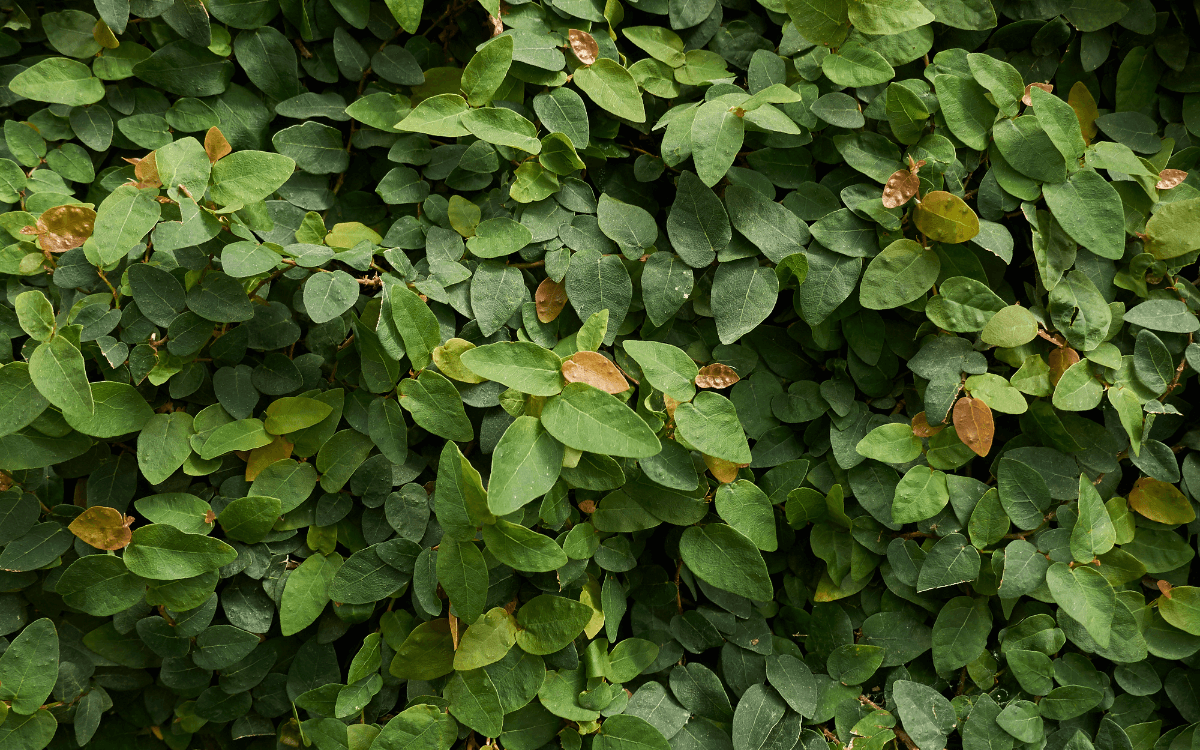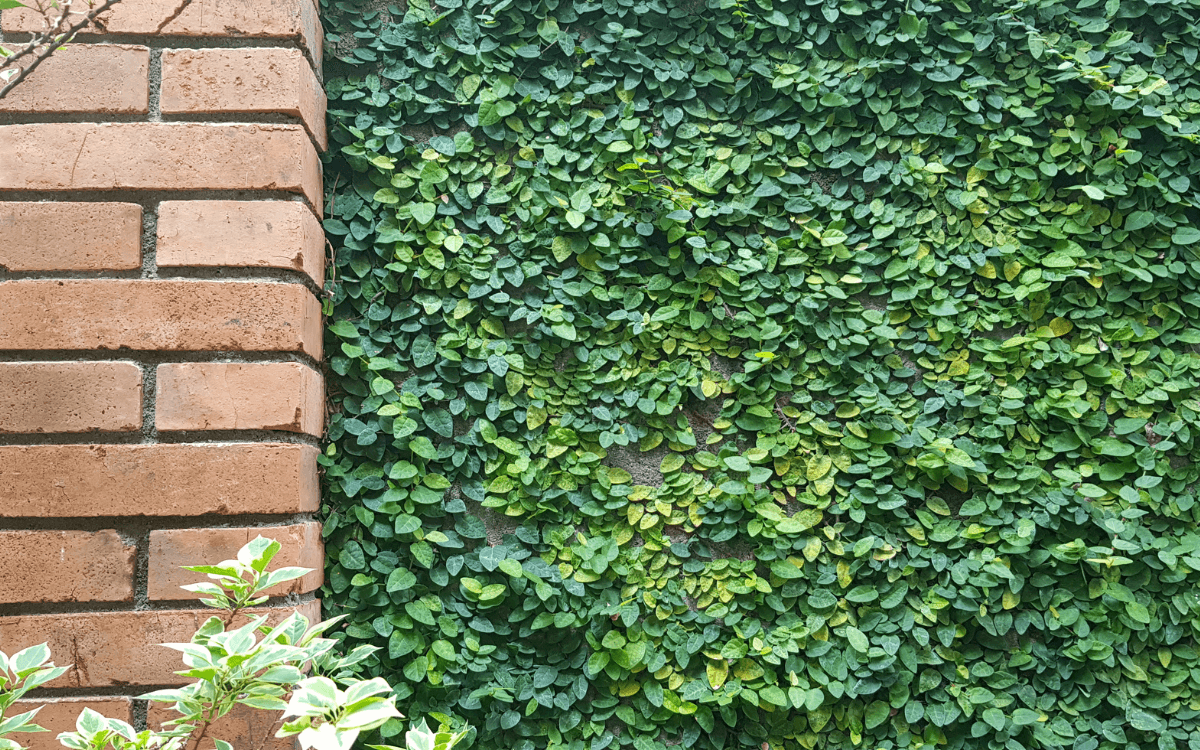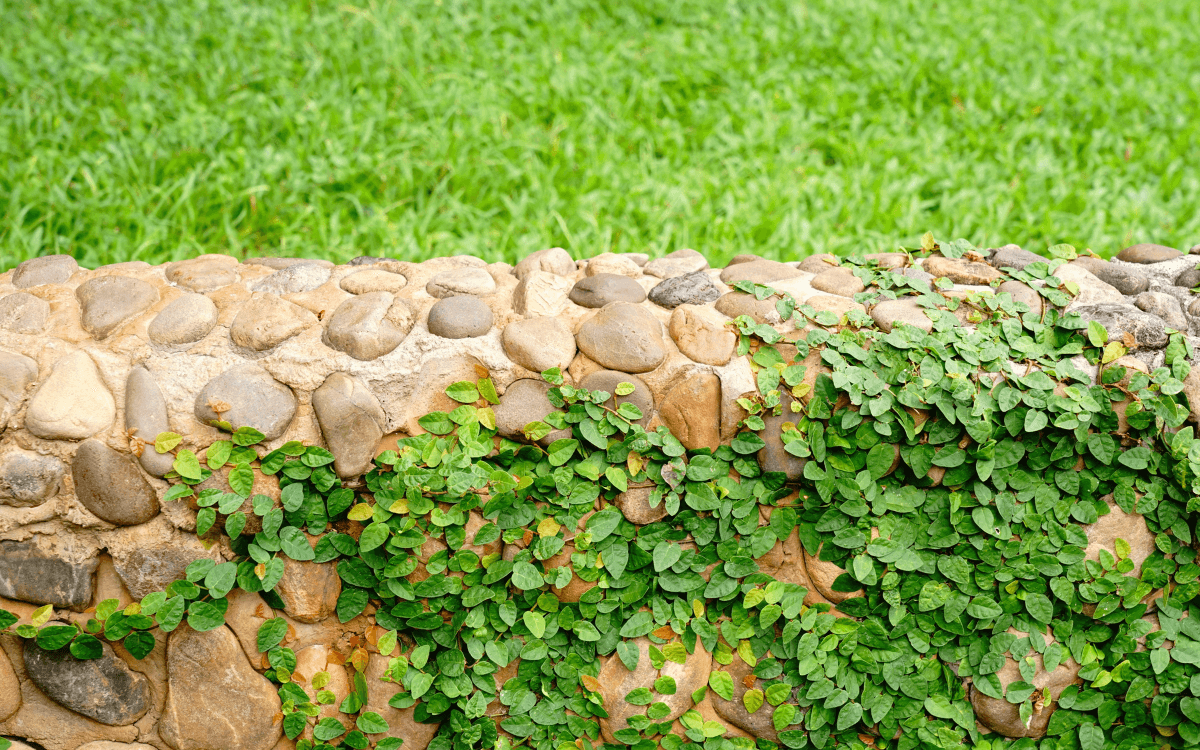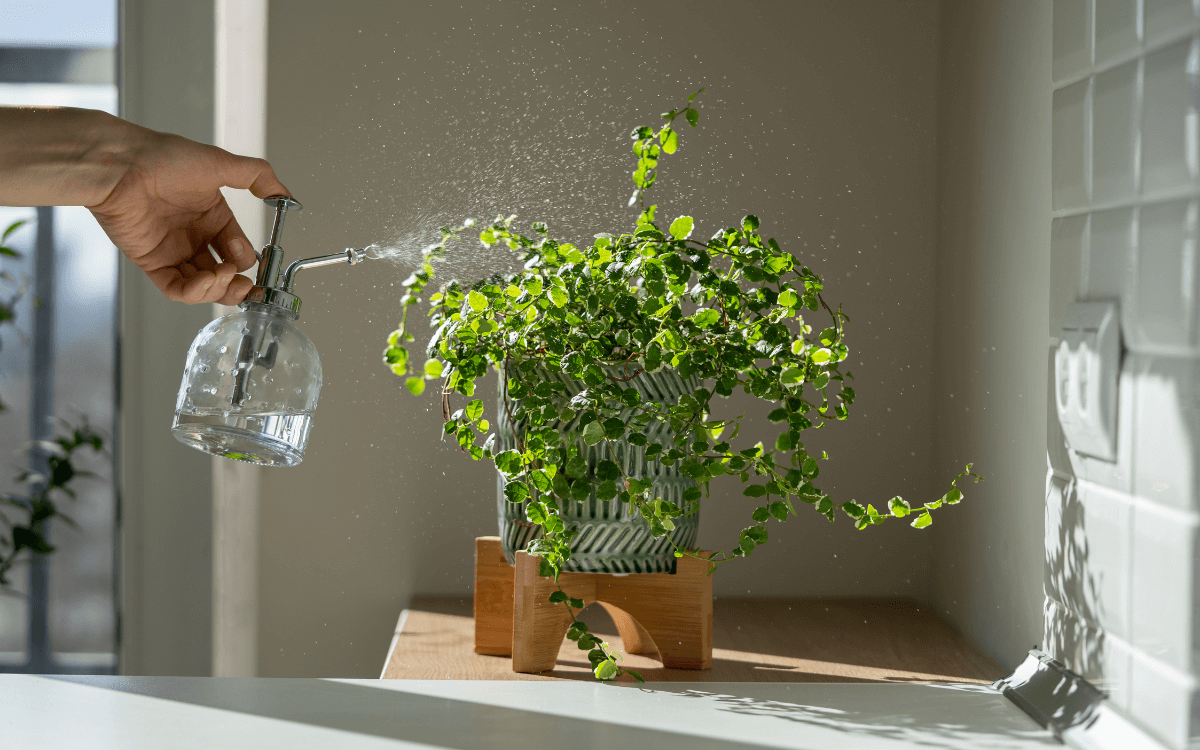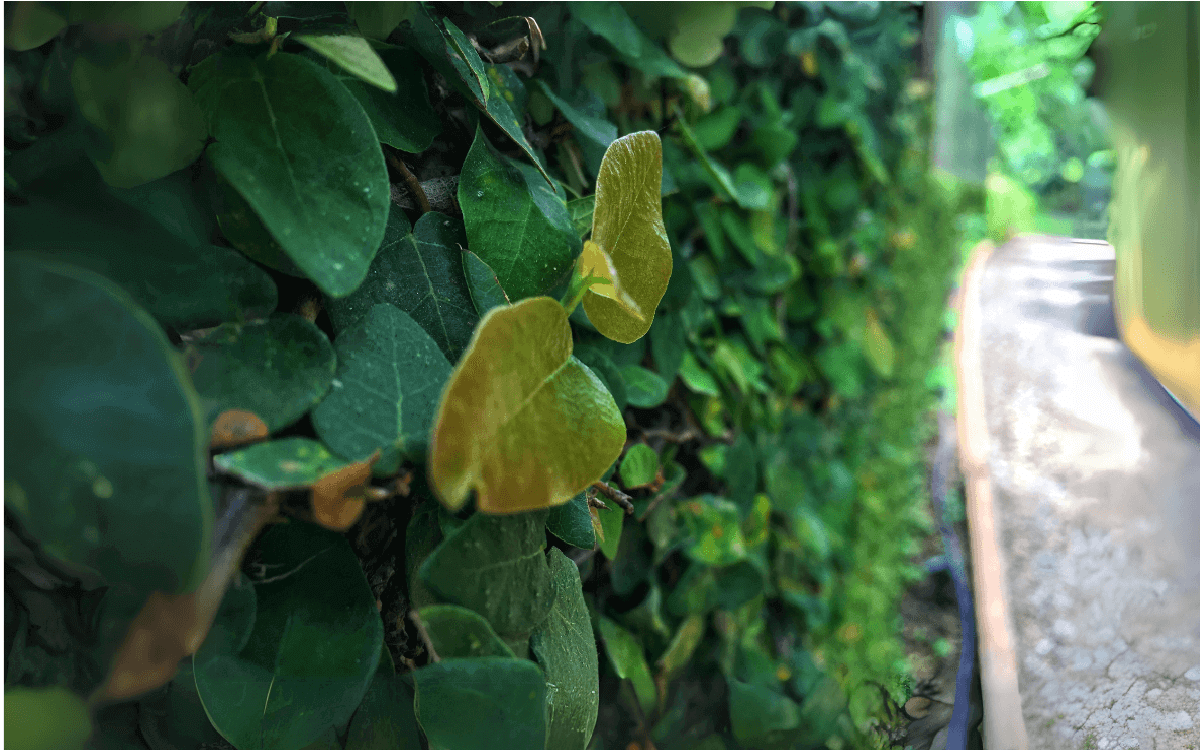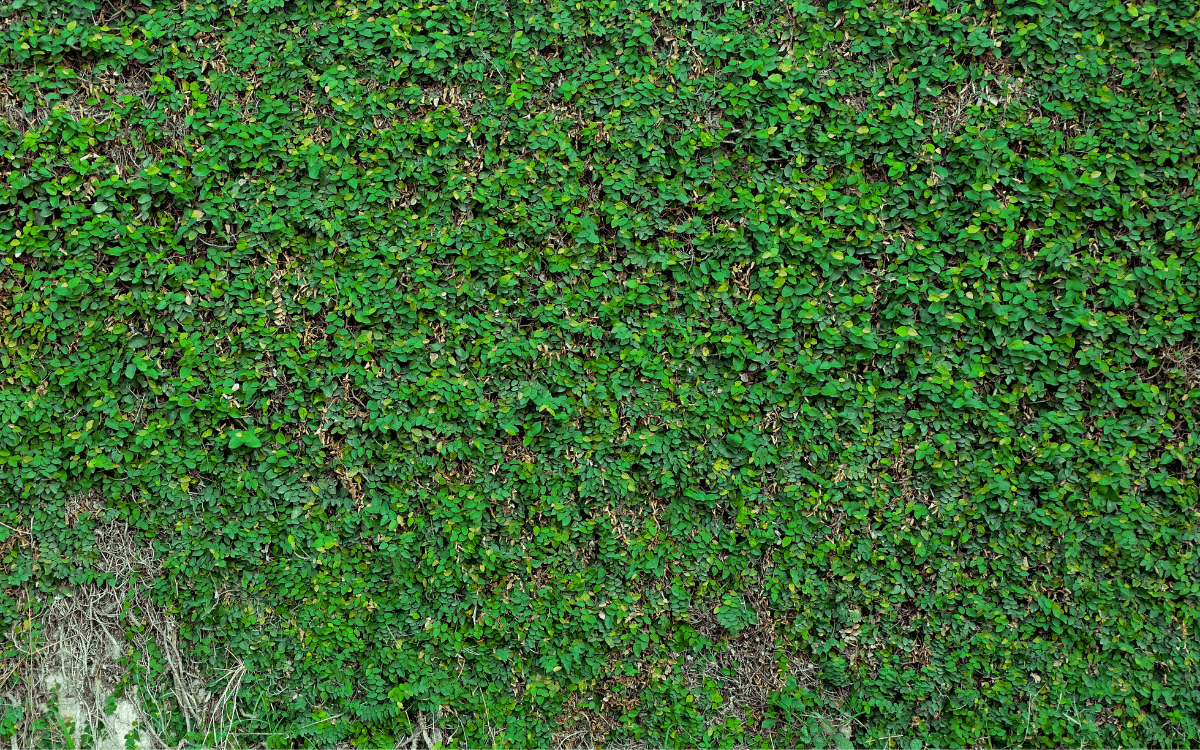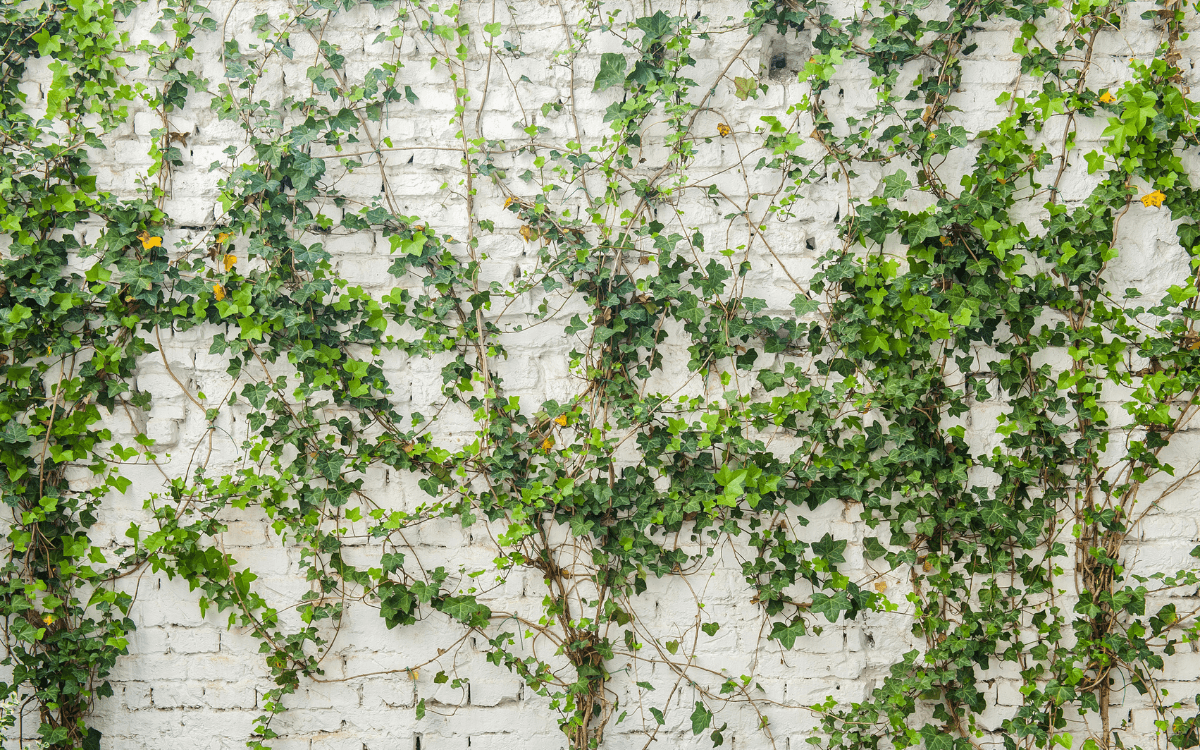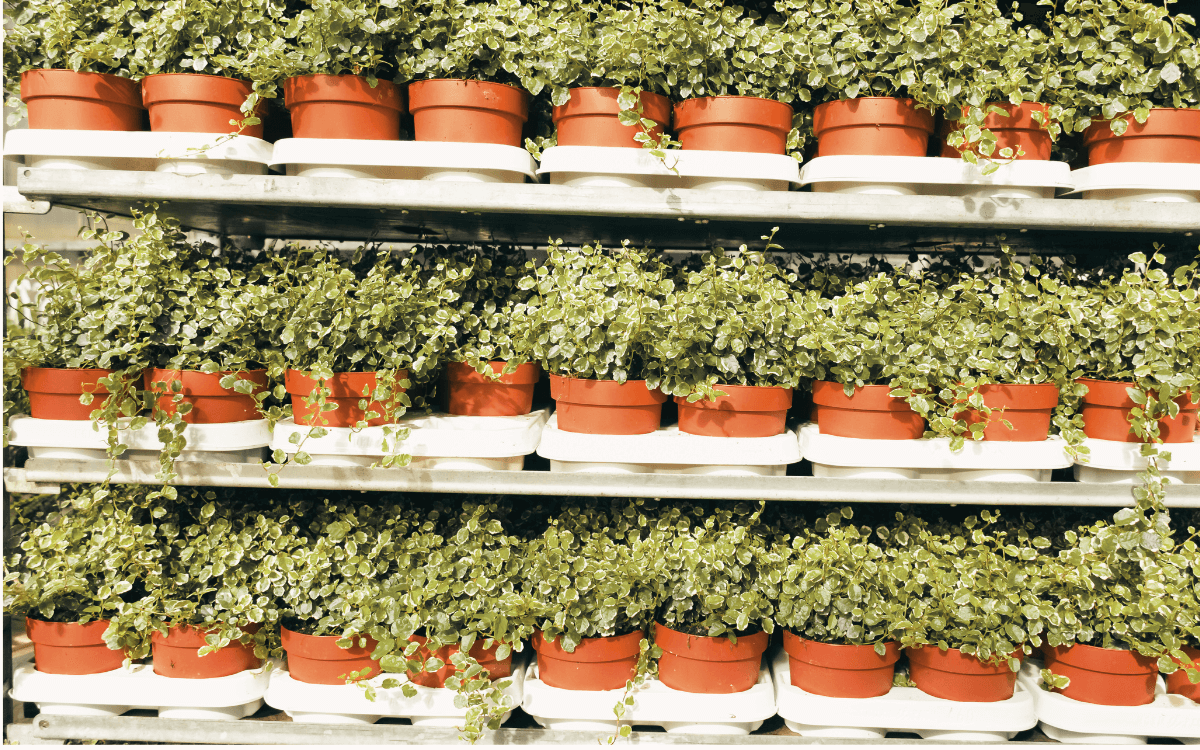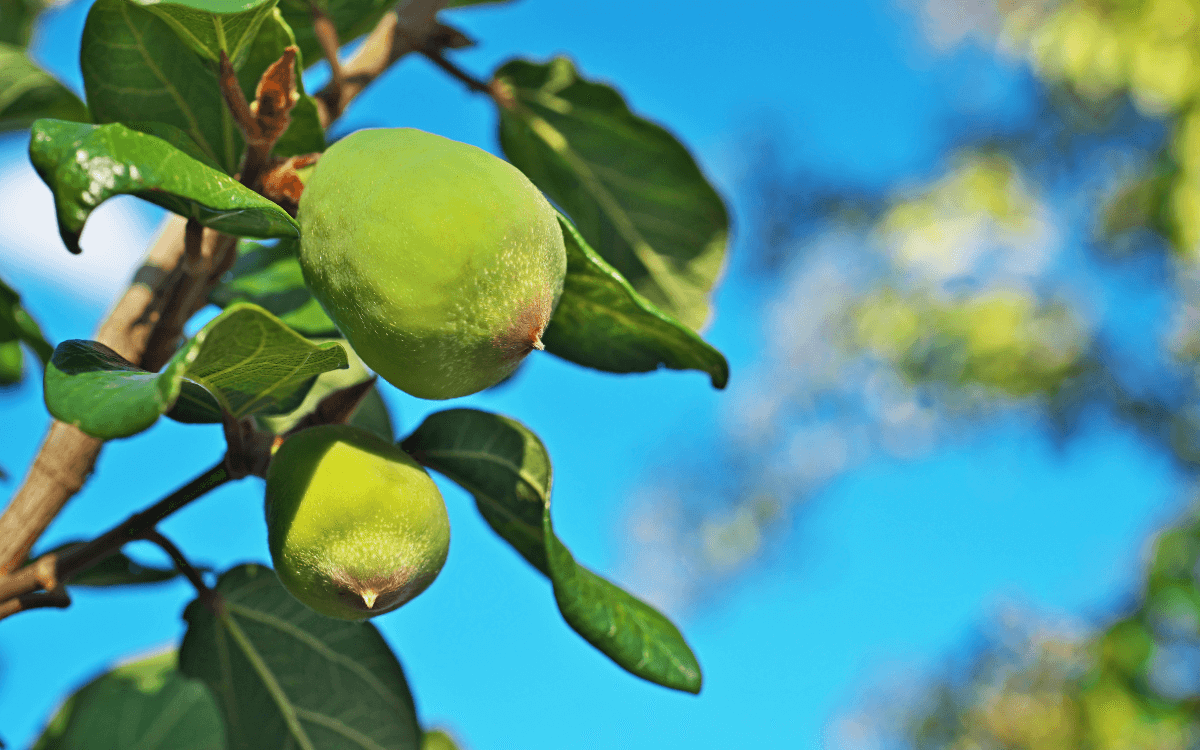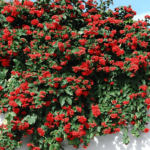The Ficus Pumila, commonly known as the Creeping Fig or Climbing fig, is a vine that stands out for its beauty and versatility.
This species belongs to the Moraceae family and can adhere to various surfaces, which gives it prominence in the decoration of gardens and urban spaces.
Continue reading this article to learn a little more about the Ficus Pumila, its characteristics, curiosities, and how to cultivate it in your home or garden.
Characteristics of the Ficus Pumila Plant
A close relative of the fig trees, the Creeping Fig or Climbing fig is recognized by its small, shiny green leaves, oval or heart-shaped, that densely cover its fragile stems, allowing it to easily fix itself on vertical surfaces through its roots.
This adhesive ability transforms walls, fences, stairs, and other structures into true green carpets, bringing life and color to both indoor and outdoor environments.
Its flowers are discreet, developing in syconia in the axils of the leaves, and are rarely observed in indoor settings.
See below how to plant, multiply and cultivate this plant.
Where to Plant and Uses
The Ficus Pumila, or Creeping Fig, is a plant that can be cultivated in various environments, both indoors and outdoors.
This adaptability to various climatic conditions makes the Ficus Pumila suitable for planting in a wide range of regions, from equatorial and subtropical to tropical, allowing its cultivation in various locations around the world.
Outdoor Environments
Outdoors, the Ficus Pumila stands out as an excellent choice for covering:
- Walls
- Fences
- Grilles
- Trellises
- Stones
- And other vertical elements
Moreover, its use on stairs and handrails can transform common areas into green spaces, adding aesthetic and natural value to the environment.
Another popular application is as ground cover in gardens, where its dense, creeping foliage can create a continuous green carpet, providing an attractive and low-maintenance solution for areas requiring vegetation.
Indoor Environments
For indoor environments, the Ficus Pumila adapts well when cultivated in pots and hanging planters, functioning as an ornamental vine.
This characteristic makes it ideal for use as a hanging plant or to cover the base of other indoor plants, creating dynamic and interesting compositions in residential or commercial spaces.
Lighting
The Ficus Pumila is capable of adapting to different levels of light, from full sun to partial shade.
It can grow in environments with diffused light or even in low light conditions, depending on the variety.
Varieties with entirely green leaves generally prefer partial shade, while those with white edges, like the ‘Sunny’, are more tolerant to sun.
This flexibility in light exposure allows the Creeping Fig to be used in various landscape contexts, both indoors and outdoors.
Temperature and Humidity
The ideal temperature for cultivating the Ficus Pumila is between 18°C (64°F) and 27°C (80°F), but it shows good tolerance to moderate temperature variations.
It is important to note that the plant should be protected from extreme temperatures to ensure its healthy development.
Humidity plays a crucial role for this species, which prefers warm and humid environments.
Watering
During the spring and summer, which correspond to the plant’s maximum growth period, the Ficus Pumila requires regular watering to ensure the soil is always at an adequate moisture level.
It is recommended to water the soil thoroughly at each watering, allowing the water to drain completely, thus avoiding waterlogging.
In autumn, it is advisable to reduce the frequency of watering, and during winter, the plant demands even less water, being important to adjust the amount to prevent the soil from becoming excessively dry or wet.
Excess water is one of the main risks to the health of the Ficus Pumila, leading to root diseases. Therefore, avoiding leaving the plant in waterlogged soil or in containers with accumulated water is essential.
An effective way to check the need for watering is to touch the soil: if the top layer is dry, it’s time to water again. This simple method helps prevent excess or lack of water, ensuring the appropriate moisture for the plant.
Read too:
Ideal Soil
The ideal soil for the Ficus Pumila combines essential characteristics such as:
- Fertility: The soil should be rich in nutrients to support the vigorous growth of the Ficus Pumila. Enriching the soil with organic compost is recommended, as it increases nutrient content and improves soil structure.
- Drainage and Porosity: The ability of the soil to drain is crucial to avoid water accumulation, which can lead to root rot. A well-drained soil, with good porosity, allows excess water to flow away while retaining the necessary moisture for the plant.
- Moisture Retention: While the soil needs to drain well, it should also be capable of retaining enough moisture to keep the roots hydrated. The addition of organic material can help improve this capability.
These are elements that ensure the plant’s roots can breathe, absorb nutrients efficiently, and avoid the risk of rot.
The Creeping Fig is versatile and adapts well to a variety of soil types, including clayey, sandy, and rich in organic matter, with a preference for an acidic or neutral pH.
To optimize plant growth in these soils, it’s crucial to ensure they meet the drainage and moisture retention requirements mentioned above.
Below are some materials you can use to improve the soil for this plant:
- Sand (to increase permeability).
- Pine bark, perlite, vermiculite, coconut fiber (to improve soil structure, providing a fluffy and light base, ideal for root development).
- Gravel, expanded clay, or perlite (to improve drainage).
In summary, the ideal soil for the Ficus Pumila should be fertile, well-drained, capable of retaining moisture without becoming waterlogged, and with a structure that allows the plant’s roots to develop properly.
Ideal Fertilization
A balanced fertilization, providing essential nutrients such as nitrogen, phosphorus, and potassium, is key to meeting the nutritional needs of this plant.
The Ficus Pumila responds well to both balanced mineral fertilizers and organic fertilizers, such as worm compost, castor cake, and worm humus. These can be added to the soil at planting time or as a supplement to mineral fertilization, enriching the soil with nutrients and improving its structure.
Below are some additional tips that will help you when fertilizing:
- Nutritional Balance: It’s essential to choose a fertilizer that offers a proper balance of nutrients. Fertilizers high in nitrogen should be avoided, as they can stimulate excessive leaf growth at the expense of flowering and fruiting.
- Fertilization Frequency: During the active growth period, the Ficus Pumila should be fertilized every 3 weeks, while during rest periods, such as autumn and winter, fertilization can be reduced to every 2 months.
- Conscious Use: Following the manufacturer’s dosage instructions is crucial to avoid over or under-fertilization. Excess fertilizer can result in shallow roots and leaf drop, while a lack of nutrients can limit plant growth.
Planting
The Ficus Pumila can be planted at any time of the year, except during periods of drought.
Successful planting starts with soil preparation, which should be rich in organic matter and well-drained.
When planting, create a hole that is larger than the plant’s root ball, using a mix of substrate enriched with coconut fiber and topsoil.
Repotting
Repotting becomes necessary when the plant exceeds the size of its current pot or when the soil is too compacted.
When repotting, choose a new pot with suitable substrate and add organic fertilizer or a balanced fertilizer to revitalize nutrition.
Keep the soil moist, but not waterlogged, to promote the plant’s establishment in its new home.
Pruning
Pruning is essential to shape the plant, stimulate growth, and remove dry or damaged branches.
The Ficus Pumila can be pruned at any time of the year, avoiding, however, the flowering periods.
Use sterilized pruning shears to make clean cuts and prevent the spread of diseases.
Besides shaping the plant, pruning helps control its growth, especially when directed by supports like trellises or walls.
Propagation
The Ficus Pumila can be propagated through layering, cuttings, or seeds.
Cuttings
Cuttings is the most commonly used method for propagating the Ficus Pumila due to its simplicity and effectiveness.
To propagate by cuttings, it’s necessary to cut a piece of the stem about 4 to 6 inches long (10 to 15 centimeters), removing the leaves from the lower part and leaving some at the top.
The cutting should be planted in a substrate with good drainage, kept moist, and placed in a location that receives indirect light.
Under the right conditions, the cutting will form roots after a few weeks and begin to grow, becoming a new plant.
Layering
The layering technique involves bending a young, flexible stem into the soil or substrate, keeping it attached to the mother plant until it roots.
A ring is made on the stem, and a rooting hormone can be applied to stimulate the formation of new roots.
The area is then covered with moist substrate, promoting root development. After a few weeks, once the roots have formed, the new plant can be cut from the mother plant and transplanted to a new location.
Seeds
Although less common, propagating the Ficus Pumila by seeds is possible.
The seeds should be extracted from the fruit and dried in the shade for approximately five days.
Then, they are planted in a substrate rich in organic matter, kept moist, and at a temperature between 68°F and 77°F (20°C to 25°C).
Germination can take several months, and this method offers a more prolonged experience compared to cuttings and layering.
Pests and Diseases
Below are the main pests and diseases that can attack your Creeping Fig.
- Mealybugs: Identified by small white, brown, or dark spots on the leaves, mealybugs can be controlled through washes with soap and water. In more severe cases, it may be necessary to physically remove the most affected parts of the plant.
- Aphids and Mites: These pests can also affect the Ficus Pumila. Manual control, removing the pests with a brush or cotton moistened in soapy water, is an option. Biological and chemical controls, with specific products, can also be effective.
- Powdery Mildew: Characterized by a whitish layer on the leaves. Treatment includes the use of specific fungicides to combat this fungal disease.
- Root Rot: Generally caused by excess moisture in the soil, root rot can be prevented through proper watering, avoiding soil waterlogging.
- Leaf Loss: Caused by lack of light or nutrients, leaf loss can be prevented by ensuring the plant is in a well-lit location and receives regular fertilization.
Other Tips and Information
Below are other tips and information about the Creeping Fig that have not been mentioned in this text.
- Toxicity: the plant is toxic to pets and can cause vomiting and diarrhea. It’s important to keep the Ficus Pumila out of reach of pets to prevent poisoning.
- Growth Control: this is a rapidly growing plant, careful pruning is necessary to prevent it from becoming invasive, especially if cultivated as ground cover.
- Recognition: the Ficus Pumila is highly appreciated and recognized for its ornamental value, having received the “Royal Horticultural Society Award of Garden Merit”.
This was our complete article about the Creeping Fig, whose scientific name is Ficus Pumila. If you want to learn more about other plants, below I have separated some texts that might interest you.
- Tillandsia Air Plants: Species and Care (With Photos)
- Orange Jasmine: Curiosities, How to Care and Photos
- Myrtle (Myrtus communis): Characteristics and Care
- African Iris: How to Care and Propagate
- Sandpaper Vine (Petrea volubilis): Care and Propagation
- China Rose (Rosa chinensis): 8-Step Care Guide
Also, help our site by sharing this text on your social networks and leaving a comment below, because I will be very happy to interact with you.

